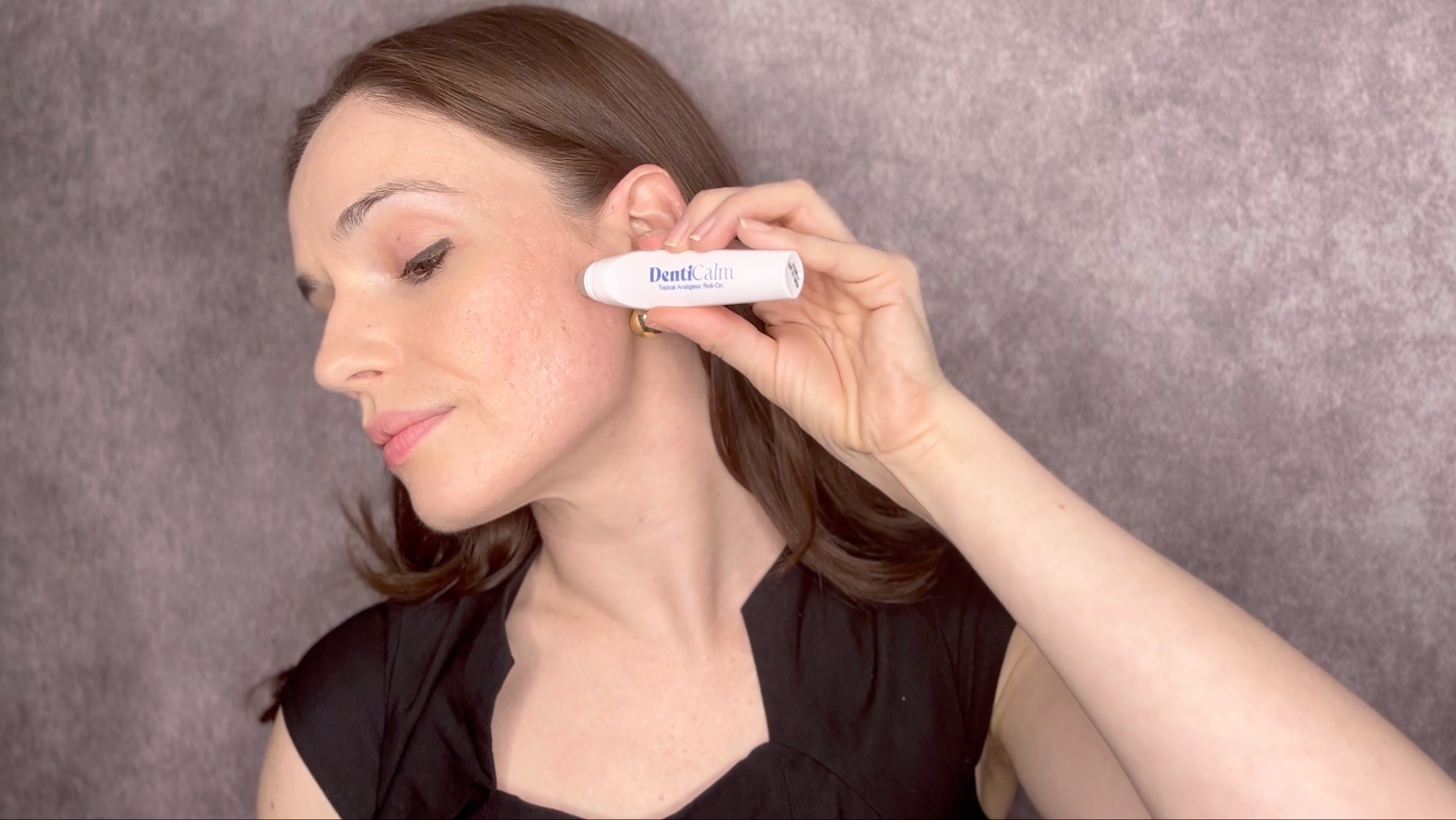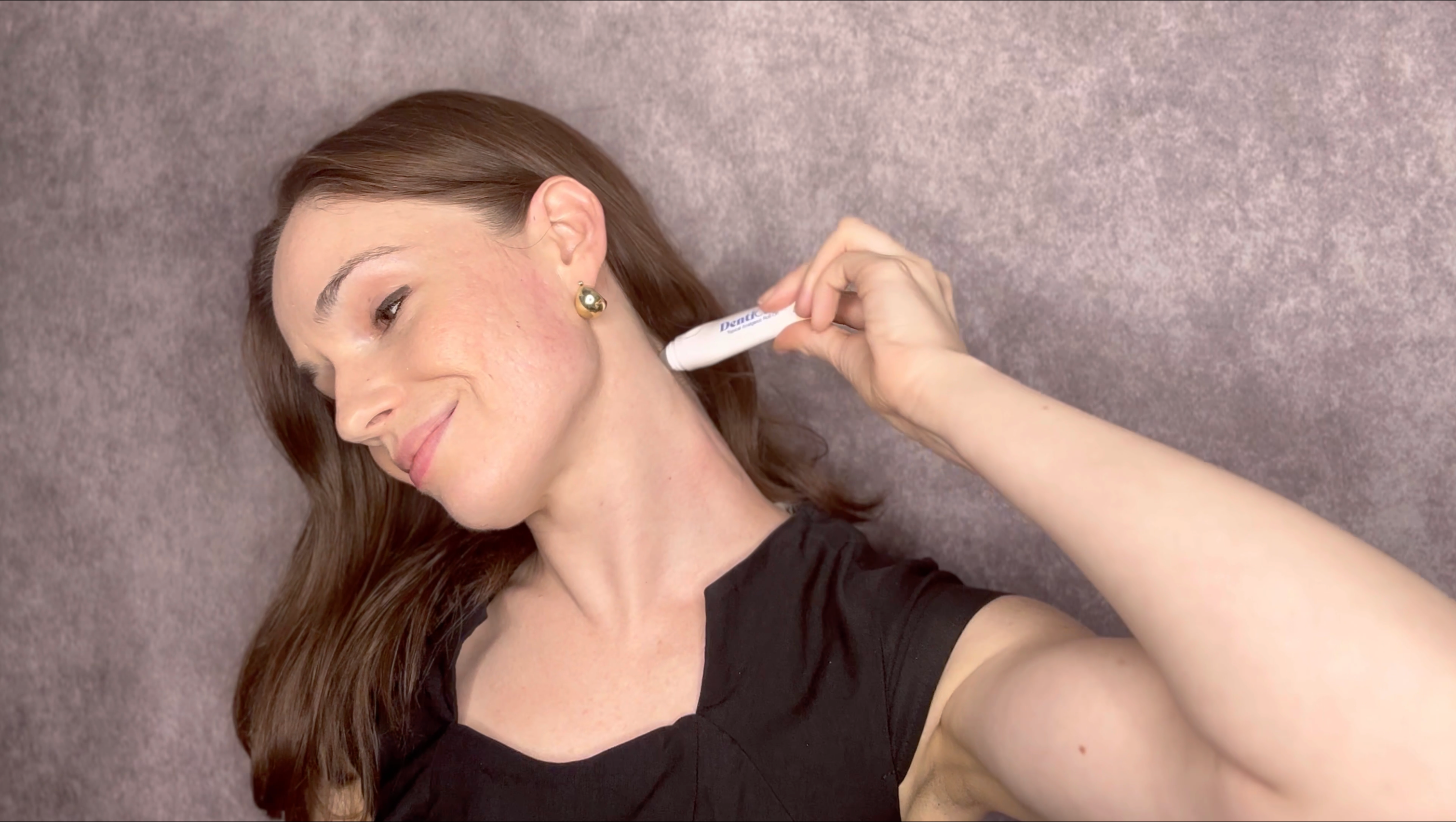Massage Techniques for Bruxism Relief with DentiCalm
Massage Techniques for Bruxism Relief with DentiCalm
-

Masseter Muscle Massage
Gently roll DentiCalm over your jawline, focusing on the masseter muscles running along the side of your face from jaw to cheekbone. Apply pressure and repeat the motion as needed.
-

Pterygoid Muscle Massage
Incorporating a side-to-side motion, glide DentiCalm towards the rear of the jaw, starting below the ear and massaging downwards along the jaw's angle, indirectly targeting the area of the pterygoid muscles.
-

Temporal Muscle Massage
To relieve headaches associated with bruxism, target the temporal muscles by rolling DentiCalm in small circular motions on your temples, near your hairline. Be gentle and maintain a relaxed posture.
-

Neck and Shoulder Massage
Bruxism often leads to tension in the neck and shoulders. Apply DentiCalm to these areas and perform gentle kneading motions to release muscle tension, focusing on any knots or tight spots.
-

Temporomandibular Joint (TMJ) Massage
Position DentiCalm just in front of your ears, near the TMJ, and gently open and close your mouth to identify the joint's movement. Apply gentle, circular pressure over and slightly below the TMJ area.
-

Pressure Point Massage
Locate the pressure points in your face and neck, such as the temporomandibular joint (TMJ) area and the base of your skull. Apply pressure with DentiCalm while breathing deeply to promote relaxation.
Stretching Exercises
After using DentiCalm, incorporate some simple neck and jaw stretching exercises to further reduce tension. Slowly tilt your head from side to side and gently open and close your mouth to stretch the jaw muscles. Relax your shoulders by rolling them forward and backward.






